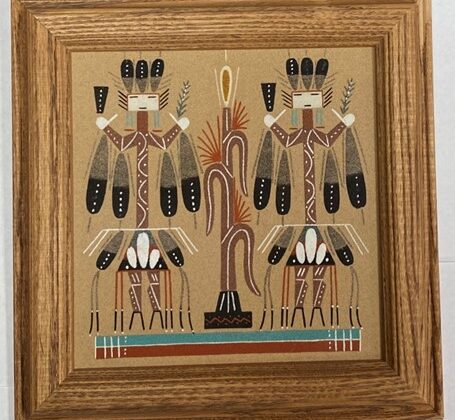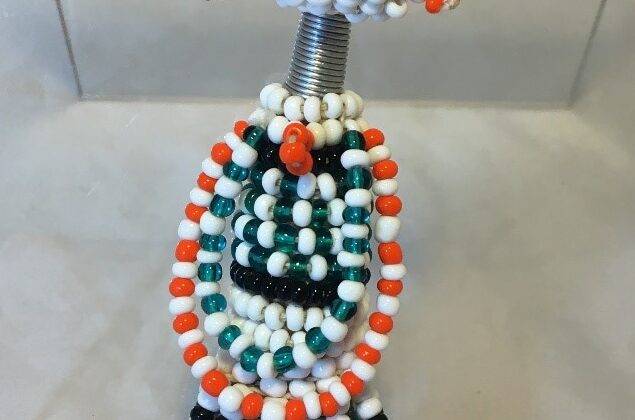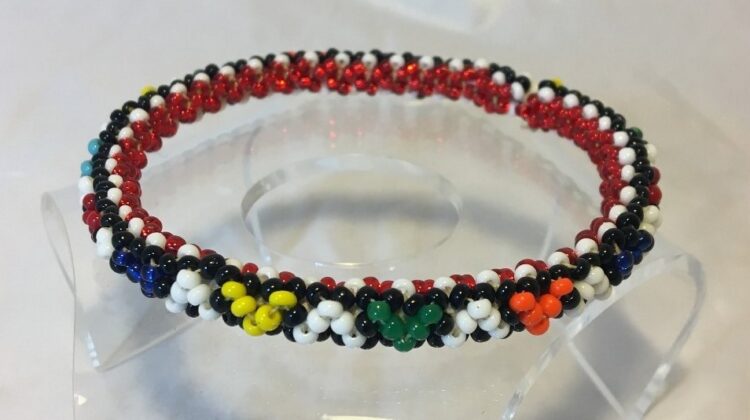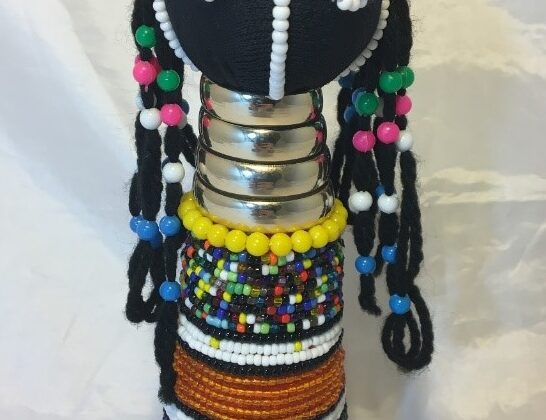The artworks in this exhibit are not actual Navajo sandpaintings, but reproductions. This is because traditional sandpaintings are made by arranging substances on the ground or on the floor, without any kind of binder or glue. These are therefore not permanent, but ephemeral artworks that may not be saved or collected. Traditional sandpaintings are made by the Navajo (also … [Read more...] about Navajo/Dine Culture Sandpainting Reproductions by Lindsey Vandieren
These colorful earrings are made with light green, dark green, blue, and red seed beads. The almond shape of the transparent green beaded loops suggests that they may represent leaves, or more likely, feathers that are tied along a string. Feathers were commonly worn as status symbols among Great Plains cultures, as they were presented as symbols of recognition for different … [Read more...] about Native North American Beadwork by Alexa Langelier
The Pair of Bead and Wire Girls and the Bead and Wire Woman likely developed from both beadwork for courtship rituals and traditional dolls to become another type of figurine that was created for the tourist trade. Like the Beaded Figurine of a Girl, these wire figures also represent traditional Ndebele female dress; these figures, however, are completely made … [Read more...] about Pair of Bead and Wire Girl Figures and Woman Figure: Researched by Kylei Giles
The colors and triangular patterns shown in this beaded bangle are a common subtype of Zulu beaded works that feature white, dark blue, light blue, black, and red designs, and one of the functions of wearable beadwork is to show characteristics of the wearer through such specific patterns and colors. A Ndebele woman may make beaded jewelry as decorations for her body and to … [Read more...] about Multicolored Beaded Bangle Bracelet with Triangle Pattern: Researched by Kylei Giles
The Beaded Figurine of a Girl is a type of figure that developed from the traditional corncob doll that was used to teach young girls how to nurture children. The body of the beaded figurine has a similar silhouette to an ear of corn, and this columnar figure illustrates an ideal of beauty for this culture. This beaded figurine also wears traditional Ndebele dress; the metallic … [Read more...] about Beaded Figurine of a Girl: Researched by Kylei Giles





